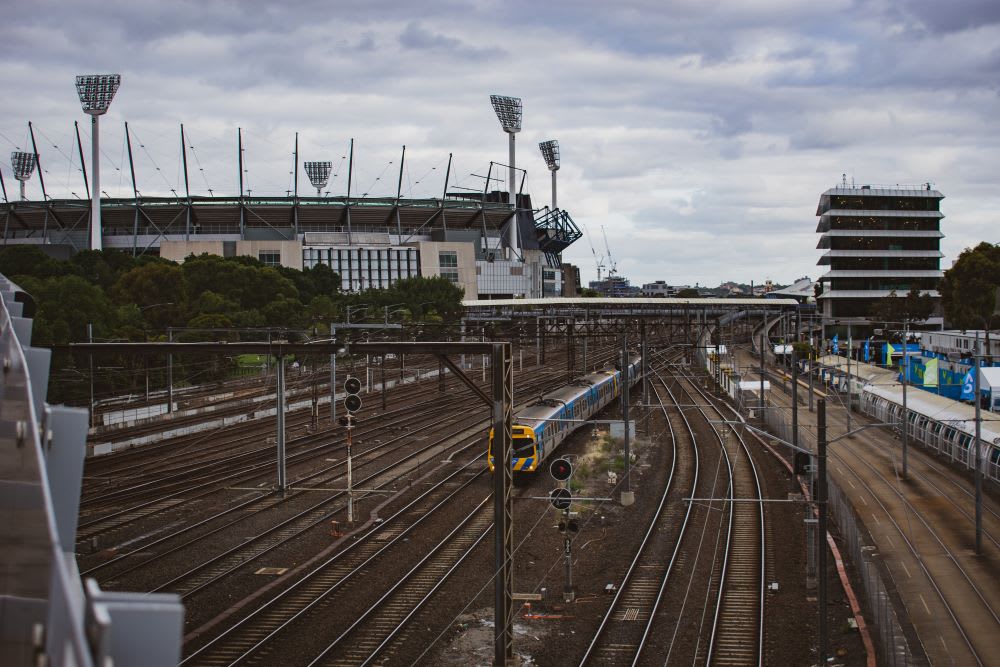- Published 22 Feb 2024
- Last Modified 6 Mar 2024
- 5 min
How Proximity Sensors Enhance Train Safety and Performance
Explore the role of advanced proximity sensors in improving rail safety and performance in Australia. Discover top brands online at RS Australia.

In Australia’s rail transport sector, maintaining high standards of safety and efficiency is not just a regulatory requirement but a necessity for the vast and diverse landscapes it traverses. The integration of advanced technologies, particularly inductive proximity switches and sensors, marks a significant leap in enhancing train safety and performance across the nation’s rail systems.

How do Inductive Proximity Sensors Work?
Inductive proximity sensors operate by creating an electromagnetic field to detect metallic objects without physical contact. These sensors are particularly beneficial in the Australian rail industry, where they serve crucial roles in ensuring operational safety and efficiency. For instance, in the busy rail networks of Sydney and Melbourne, these sensors are employed to monitor the position of switching mechanisms, ensuring that they are correctly aligned to guide trains safely along the right tracks.
Another instance of their use is in remote mining operations in Western Australia, where inductive proximity sensors play a vital role in managing the flow of ore-laden trains, ensuring that loading and unloading operations are performed seamlessly.
Be it commercial or industrial, proximity sensors have an important role to play in ensuring Australia’s trains run as smoothly as possible.
The Role of Proximity Sensors in Train Safety
In the realm of train safety, proximity sensors serve multiple functions. They are pivotal in obstacle detection systems, helping to prevent collisions with objects on the tracks. In scenarios where wildlife or fallen debris can be a hazard, such as in rural or forested regions of Australia or the Outback, these sensors provide an essential safety layer that protects both the animal and the train’s passengers from harm by detecting the disruption ahead of time and signalling the train to stop.
Additionally, they are integral in track integrity monitoring, alerting operators to potential track malfunctions or damages, or even real-time track conditions. This is crucial in a country with such an extensive rail network, as maintenance crews can optimise their maintenance schedules without wasting time. Another key application is in collision avoidance systems, where sensors help in maintaining safe distances between trains, which is crucial for reducing the risk of accidents in busy rail corridors like those in Sydney or Melbourne.
Enhancing Train Performance with Proximity Sensors
Proximity sensors also contribute significantly to the efficient operation of the trains themselves. Through predictive maintenance, these sensors detect early signs of wear and tear in critical components such as wheels and brakes. This early detection is essential for the timely maintenance of trains operating across Australia’s diverse terrains, from the humid tropics of Queensland to the arid deserts of South Australia. This not only reduces downtime but also extends the lifespan of valuable rail systems and equipment. R&D teams can also gain valuable insight into how different train parts react to environmental factors via this real-time information, potentially leading to better infrastructural upgrades down the line.
Integration Challenges and Solutions
While the benefits of proximity sensors in the rail industry are clear, integrating them into existing rail systems can pose challenges. For example, ensuring compatibility with legacy systems used in older railways while upgrading to more modern sensor technology requires careful planning and execution. Though federal initiatives like the National Rail Action Plan do provide support for railway companies seeking to upgrade and standardise their systems to the latest cutting-edge technologies, it still takes time for all components to be tested, installed, and inspected to ensure no faults occur.
Adapting these sensors to withstand Australia's unique environmental conditions, such as the corrosive sea air along coastal routes and the extreme heat in inland areas, is also crucial to minimising costly replacements or repairs down the line. Collaborative efforts with technology experts and customised sensor solutions are key to overcoming these challenges.
Enhance Train Safety and Performance with RS Australia

Proximity sensors are a crucial component in modernising Australia's rail systems, offering enhanced train safety and efficiency in order to cope with increasing ridership and changing passenger demands. RS supports this advancement by offering a range of high-quality sensors from trusted and renowned global brands suitable for various rail applications across Australia.
Browse our selection of inductive proximity sensor brands online, as well as other sensor gear types such as pressure sensors, RTD sensors, and level sensors. Or browse the latest industrial and commercial insights, from how PPE enhances safety in rail manufacturing to our guide to relays and signal conditioning.
Popular Proximity Sensor Brands
Related links
- Railway Safety and Efficiency: A Guide to Proximity Sensors
- How Cable Ties Ensure Food Safety and Hygiene in F&B
- Navigating Noise: Effective Use of Sound Level Meters
- Improving Efficiency with Modern Pneumatics & Hydraulics
- Integrating Flow Sensors with IoT: The Future of Industrial Monitoring
- Elevating Mine Safety: The Essential Role of Proximity Sensors
- Advancing Railway Safety with High-Quality Cabling Solutions
- Strain Gauges and Load Cell Technology for Railway Maintenance